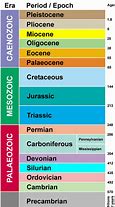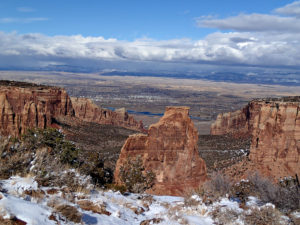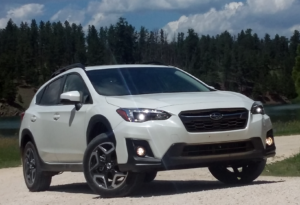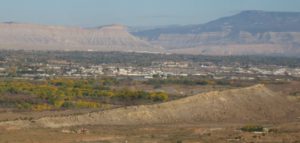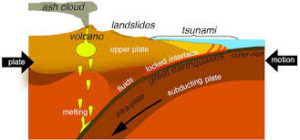Kodel’s Canyon
Growing up in Fruita, Colorado on Colorado’s Western Slope I had rich opportunities for exploration. The area is amazingly diverse, offering the 10,000 foot elevation Grand Mesa to the east, the stark Bookcliffs to the north, and the spectacular red rock canyons of the Colorado National Monument just south of town. All this surrounds the Grand Valley where I grew up. These areas and others were within short driving distance, with the Monument in bicycle range just across the Colorado River.
My friends and I used to take our .22s across the river and assault hundreds of rocks. Our wandering took us across the National Monument boundary into Kodel’s Canyon. Nobody went there in those days so we didn’t worry about having illegal guns in the park. The canyon was smaller than the others, but we had the place to ourselves. The approach is a deeply eroded plain of Dakota Sandstone from the river to the canyon. The Cretaceous Dakota grades off to the Mancos Shale of the Grand Valley floor.
That Mancos Shale is usually called Stinking Desert by many. It is somewhat infertile unless well drained, and results in mostly barren gray flats. Lots of barren gray flats from central Utah to Delta, Colorado. With water and good drainage to carry the salt away, it can be farmland. We would leave home on the valley floor and climb into the red rock Kodel’s Canyon. At the mouth of the Canyon is the Kodel’s Canyon fault, where the Uncompahgre Uplift shoved all those Older Jurassic red rocks above the Cretaceous Valley.
The bottom of the canyon is smooth rounded granite and schist geologists call basement rocks. They are seldom found exposed on the Colorado Plateau, covered by thousands of feet of sedimentary rocks. The time gap between those old basement rocks and the sedimentary rocks sitting on them is over a billion years. It’s called the Great Unconformity, where all the rocks deposited during that billion years were eroded away. This gap is found in many places worldwide, but there are also many places where the rocks missing in our canyon were deposited and remain to be seen and enjoy. Think the Flatirons, Red Rocks, and the Garden of the Gods, all Cambrian. Those rocks sit on Precambrian Gneiss and Schist 1.7 billion years old.
Those old rounded black rocks are great for climbing and we did it. Today it’s called bouldering. We didn’t have climbing ropes, so we used our .22s as climbing aids. Dangerous? Yes. Fun? You bet.
Among the guys I grew up with, only one had any injury running around across the river. Jerry had a seriously sprained ankle. The two guys with him helped him down to the road and help. He exploited the ankle to excess. At Boy Scouts we always played Capture the Flag after the meeting. Jerry would hobble down to get the flag defying anyone to stop him. I walked over and pushed him down. I don’t think he ever forgave me.
